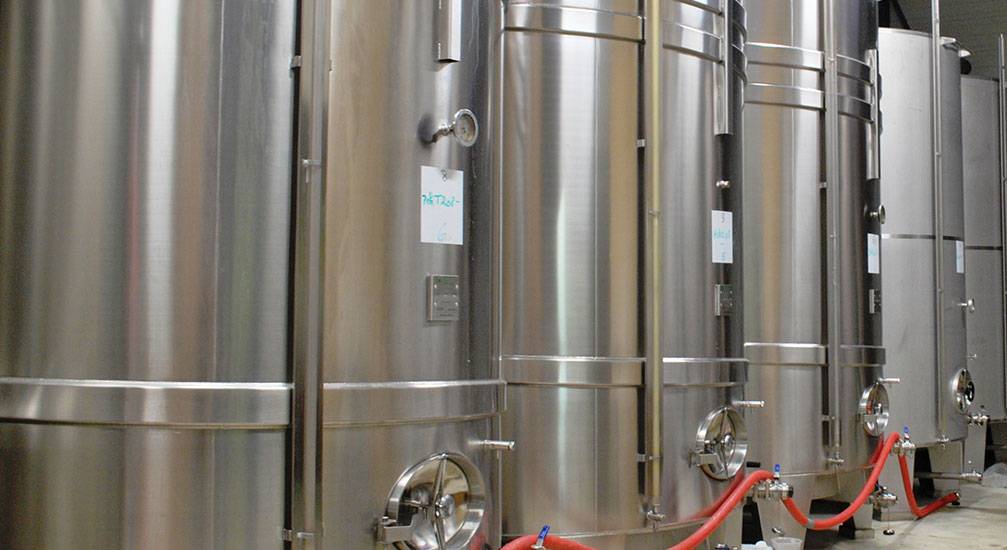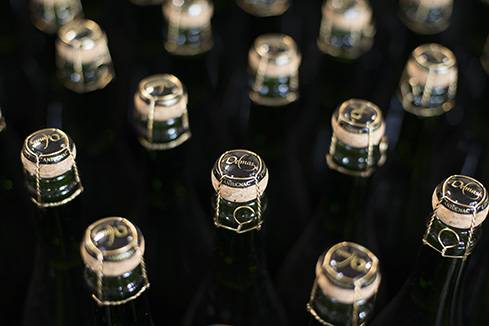Our expertise

Accompanied by an oenologist, Baptiste and myself, Bernard Delmas, follow the production of our wines from harvest to bottling.
Two methods are used to ensure the quality and authenticity of our wines: The traditional method and the ancestral method.
The traditional method
To obtain the delicate effervescence of the Blanquette and the Crémant de Limoux, we comply to this complex and rigorous method.
Reception, pressing and filtration
In September, we harvest the bunches completely by hand in order to avoid crushing them. They are immediately transported to the press and pressed one grape variety at a time with a selection of the juice. Our pneumatic presses allow us to get clear and pure juice.
Complete fermentation in the tank and assembly
For the Blanquette and the Crémant, a first fermentation is performed separately for the different varieties of grapes in stainless steel vats with an integrated cooling system to control the fermentation.. The base wines obtained are then assembled in accordance with the rules of the appellation : It is our art, Baptiste, our oenologist and myself, to subtly blend wines from different grapes and plots (inversion of varietals – plots) to find the specific character and the quality of the wines of our Estate.
Draw and secondary fermentation
The bottling of the Blanquette or the Crémant is done with the addition of a type of liquor called “de tirage” that adds sugar and the additional yeast necessary to launch the second fermentation : “the foam making.” To ensure that this is done slowly, the bottles are placed on laths in the cellar from 24 to 36 months. “Ageing on lees” is for a minimum of 9 months for Blanquette de Limoux and 12 months for Crémant de Limoux. The Delmas Domain practices an ageing on lees for 24 to 36 months.
Riddling
The deposit that remains in the wine is brought towards the neck by mechanical riddling, a daily operation performed with automatic stirrers.
Disgorgement and dosage
The bottle neck containing yeast and impurities is frozen at -20°C. When the bottle is opened, the ice cube is expelled by the pressure of the wine. To fill the new void, we add, before capping, an “expedition liqueur” specific to each cuvée or vat.
Corking, putting on the muselet, dressing, rest
Bottles of Blanquette and Crémant are corked with a large natural Cork then “muselées” (capped with wire) to contain the effervescence. They are then “dressed” with their labels and packaged. After a minimum 2 month rest, which will favour the homogenisation of the wine, the bottles can then be marketed.

The ancestral method
The fermentation of the Blanquette by Ancestral Method is entirely natural. It doesn’t resort to the sophistication of blending and ageing. The sugar in the harvested Mauzac grape, as well as the climatic conditions, are the exclusive players.
Reception, pressing and filtration
In September, we harvest the bunches completely by hand in order to avoid crushing them. They are immediately transported to the press and pressed one grape variety at a time with a selection of the juice (the “tête de cuvée,” or premium choice and the first press.) Our pneumatic press allows us to obtain clear and pure juices.
Partial fermentation in refrigerated tanks
This first fermentation of the Blanquette by the ancestral method is partially completed in a tank. It is stopped by filtration and the cold temperatures of winter to keep the residual sugar.
Second fermentation
Traditionally, the bottling of the Blanquette by the Ancestral Method takes place during the waning or descending moon of March. Fermentation begins again due to warming Spring temperatures. Then the wine begins to foam.
Disgorgement
After the halt of the second fermentation, the deposit is removed by disgorging and the bottle is filled completely, without adding expedition liqueur. The sweetness of this low alcohol wine, 6 to 7° comes solely from the presence of the sugars present in the grapes.
Drawing and dressing
Bottles of Blanquette by the Ancestral Method are corked with a large natural Cork then “muselées” (capped with wire) to contain the effervescence. They are then “dressed” with their labels and packaged.